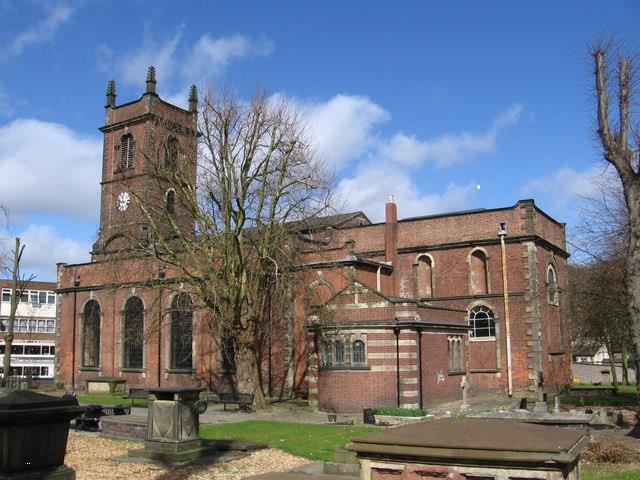St Thomas & St Luke
Dudley, West Midlands
Built in 1818, an ambitious pioneer work by the architect William Brooks built in neo Gothic style, with the only window by esteemed glass painter Joseph Backler known to have survived.

On a site of Christian worship for over a thousand years, the present building (1724) was rebuilt after an altercation in 1646 between the King's men and the Parliamentarians.
Dudley, West Midlands
St Edmund, known locally as 'Bottom Church' (to distinguish it from 'Top Church' St Thomas with St Luke to the south at the top of the hill) was originally a medieval church but it was completely rebuilt after its semi destruction in 1646 during the Civil War.
The present church was designed by Thomas Archer and is a classical building of red brick and stone dressings, and has an aisled nave and long chancel. The organ chamber and vestry on the south side was erected in 1849 and in the latter end of the 1800s there were a number of improvements when the interior furnishings were considerably changed but much of the woodwork is of high quality. Today the church is of the Anglo-Catholic tradition.
Currently St Edmund King and Martyr is in a poor state of repair. The church has boarded up windows on the tower, crumbling pointing and damaged masonry and the sides of the building are currently fenced off to prevent passers-by from being injured by falling debris. The tower repairs are the first of three phases to the building which are necessary to make it secure and weathertight, and to remove the risk of damaged features falling on passers-by. The other two phases, which will follow as and when funds are available, are to the nave and chancel. Hopefully all repairs will be completed by 2022 which will enable St Edmunds to be removed from the Heritage At Risk register.
Dudley, West Midlands
Built in 1818, an ambitious pioneer work by the architect William Brooks built in neo Gothic style, with the only window by esteemed glass painter Joseph Backler known to have survived.
West Bromwich, West Midlands
This Grade II listed building is the oldest church in the centre of West Bromwich.
Stourbridge, West Midlands
St Thomas is a Georgian church added to by the Victorians, known for its arched barrel ceiling and the Holy Ghost plaque.